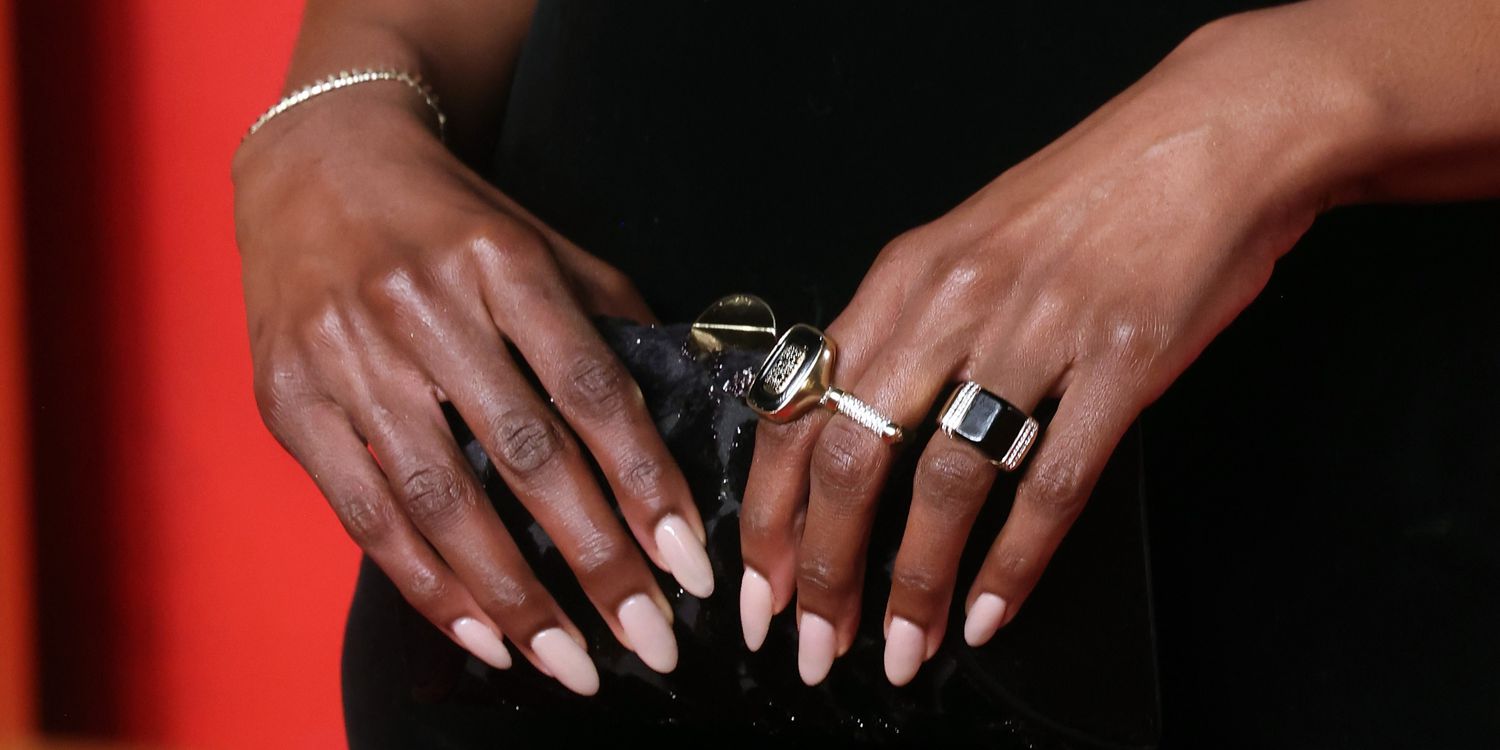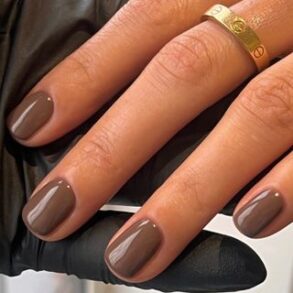
More often than not, at-home manicures mean ending up with nail polish everywhere but on your actual nails. We usually consider this a polish fail, but if you’re getting a Brazilian manicure, a messy paint job is actually the sign of a manicure done well. The practice is an integral part of how the pros in Brazil paint their clients’ nails.
“This haphazard way of painting polish is done so that it sits under the cuticles, and makes for a longer-lasting mani,” says Brazilian beauty influencer Fernanda Lacerda. “It’s minimizing the growth from your cuticle so it doesn’t look grown out,” adds celebrity nail artist Elle Gerstein. Yet despite the Brazilian manicure’s popularity, it has proven controversial. From results to risks, we turned to Lacerda, Gerstein, and nail expert Nadine Abramcyk to find out what, exactly, this beauty trend entails.
Meet the expert
- Elle Gerstein is a celebrity nail artist. Her clients include Lindsay Lohan, Blake Lively, JLo, and Jessica Biel, among others.
- Fernanda Lacerda is the owner of Maria Bonita salon in N.Y.C.
- Nadine Abramcyk is a co-founder of TenOverTen.
Keep reading for our complete guide to Brazilian manicures.
What Is a Brazilian Manicure?
“Brazilian manicures are about technique,” Gerstein says. The surrounding skin around the nails is purposely coated with a clear base coat and then the polish shade of choice, followed by removing the excess polish with an orangewood stick and acetone-soaked cotton ball. This technique eliminates the thin sliver of nail that is usually left unpainted during a manicure at your neighborhood nail salon that only gets larger as your manicure grows out. “It’s about getting polish to go underneath your cuticle so growth doesn’t come out as fast,” says Gerstein.
Courtesy of Maria Bonita Salon
Brazilian Manicure vs. Russian Manicure
Similar to a Russian manicure, a Brazilian manicure is unique in how it treats the cuticles. Just like the country’s infamous hair removal method, everything comes off. Removing the outer layer of the cuticle is often considered controversial because that extra skin is there to prevent bacteria from getting into your nails. “If you remove the nail fold, you risk allowing bacteria under the skin and into the nail matrix that could lead to possible inflammation and infection,” says Abramcyk.
The Russian manicure goes even further by having a nail technician use an electric filer to open up the eponychium (aka where your nail meets the skin) to remove the cuticle. However, unlike its Brazilian counterpart, polish is carefully painted onto the nail, not around it. This technique will lead to results that last for three to four weeks as opposed to a Brazilian mani’s week and a half—and that’s only if the proper prep and aftercare measures are taken.
Brazilian Manicure Risks
The Brazilian manicure is controversial due to its potential side effects. When you apply chemicals (think: nail polish and acetone) onto skin, which is a living, breathing organ, you’re absorbing those chemicals, explains Gerstein. “It can cause you to have allergies—cuticles that are inflamed and painful,” she adds. Or, bacteria introduced during a manicure could cause an infection.
How to Prolong Your Manicure
In order to get the most out of your manicure, “treat nailcare like skincare,” says Gerstein. Wash nails with soap and water after cuticle work, dry, then use alcohol like a toner, followed by a sticky base coat with a rubber adhesion that bonds to the nail (think of it like double-stick tape) instead of a regular base coat, she says. Her favorite? Orly Bonder Basecoat. Finally, finish with a top coat.
To end a manicure with nail art, Gerstein likes applying Seche Vite Dry Fast Top Coat on wet nails because it’s meant to dry from the top down. She reaches for Cuccio Wow It’s Dry Top Coat for many of her red carpet looks that are a single nail color—not with nail art because it will pull colors.
Also, Gerstein insists on applying cuticle oil to her clients’ nails and says it’s important to keep nails moisturized if you want to extend the wear of your manicure—not to mention promote healthy nails.
When applying cuticle oil, do it after exposure to water (e.g., post-bathing, swimming, etc.), says Gerstein. It will slow the process of your nails drying out. If they dry too fast, they can peel away and disrupt the pH level, she explains.
The Final Takeaway
If you are getting a Brazilian manicure, Lacerda recommends doing your research first and making sure the salon you’re going to has technicians on their team who are masters of the technique. This will ensure that you get a flawless and longer-lasting manicure, adds Gerstein. But beyond finding experienced and reputable nail experts, you first need to decide whether this manicure—or any nail trend—is right for you.
Social media exposes us to tons of content, but we have to remember that we’re not getting the full stories, says Gerstein. Certain “experts” learn on YouTube or TikTok rather than take a full class and may not understand how a product works or its cure time, she adds. “It’s great to perk your interest, but to learn techniques, education is key.”
“Don’t use TikTok as your end-all. It’s a guide to what’s cool and trending but it can’t be your only guide,” says Gerstein. “Go to a manicurist and nail groups. We all have our own ways, different ways, but some things are dangerous.”
Frequently Asked Questions
-
Price will vary depending on location and salon, but at Maria Bonita, a Brazilian manicure costs $35 while a Brazilian pedicure comes out to $50. For comparison, a gel manicure and pedicure at the salon are $55 and $70, respectively.
-
Technically, yes. “You can do whatever you want,” says Gerstein. “But it is not recommended,” she emphasizes.
-
No, in fact, a Brazilian manicure takes more time and is not a time-saver since it involves clean-up time, says Gerstein.
This post was originally published on this site be sure to check out more of their content.







